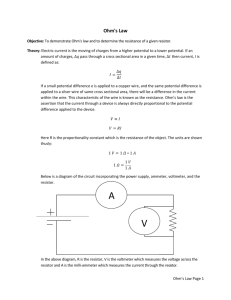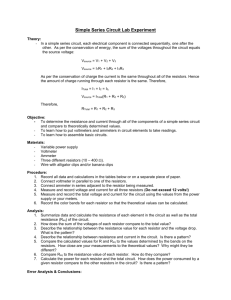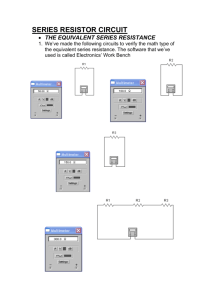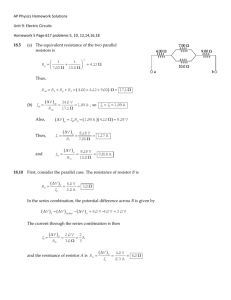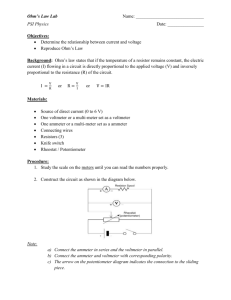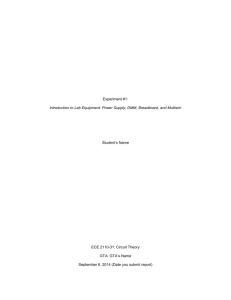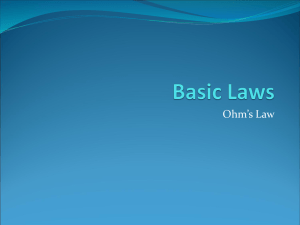Resistor prac (Croc Clips)
advertisement
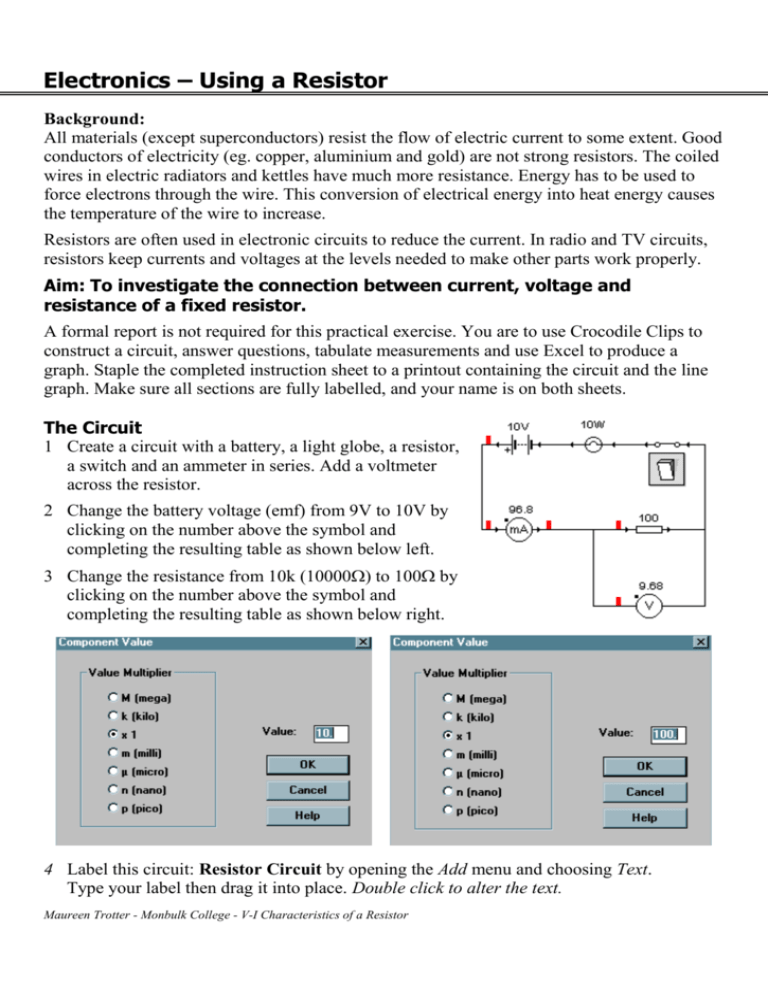
Electronics – Using a Resistor Background: All materials (except superconductors) resist the flow of electric current to some extent. Good conductors of electricity (eg. copper, aluminium and gold) are not strong resistors. The coiled wires in electric radiators and kettles have much more resistance. Energy has to be used to force electrons through the wire. This conversion of electrical energy into heat energy causes the temperature of the wire to increase. Resistors are often used in electronic circuits to reduce the current. In radio and TV circuits, resistors keep currents and voltages at the levels needed to make other parts work properly. Aim: To investigate the connection between current, voltage and resistance of a fixed resistor. A formal report is not required for this practical exercise. You are to use Crocodile Clips to construct a circuit, answer questions, tabulate measurements and use Excel to produce a graph. Staple the completed instruction sheet to a printout containing the circuit and the line graph. Make sure all sections are fully labelled, and your name is on both sheets. The Circuit 1 Create a circuit with a battery, a light globe, a resistor, a switch and an ammeter in series. Add a voltmeter across the resistor. 2 Change the battery voltage (emf) from 9V to 10V by clicking on the number above the symbol and completing the resulting table as shown below left. 3 Change the resistance from 10k (10000) to 100 by clicking on the number above the symbol and completing the resulting table as shown below right. 4 Label this circuit: Resistor Circuit by opening the Add menu and choosing Text. Type your label then drag it into place. Double click to alter the text. Maureen Trotter - Monbulk College - V-I Characteristics of a Resistor Name:……………………………………. 5 Open an Excel spreadsheet and set up a table to record the following measurements: Battery Voltage (volts) 10 8 6 4 2 Resistance R (ohms) Current Through Resistor I (amps) Voltage across Resistor V (volts) V I 6 Copy your circuit [Edit Copy Design] then paste it beside your Excel table. [First remove the tick beside the Copy with Green Fill choice in the Options menu of Crocodile Clips if you do not want the green fill in ammeters and voltmeters]. 7 Note: the voltmeter and ammeter automatically change units at times so make sure you convert all measurements back to volts and amps before recording V and I in the table. HINT: Divide by 1000 (move decimal point 3 places to the left) to change mA to A (or to change mV to V). eg. 96.8 mA should be recorded as 0.0968 A but 1.96 V should not be changed 8 What current would you expect to flow through the resistor when V = 0 volts? ………. Add this to your table. 9 Use a formula of the type: = D4/D3 to complete the last column. 10 Use Excel to graph V against I (V on the vertical scale, I on the horizontal). Make sure you correctly label both axes and include a heading (eg. V-I Characteristics of a Resistor). Conclusions: Two facts about V/I are apparent from the table and graph: ………………………………………………………………………………………… ………………………………………………………………………………………… Resistance (R), Voltage (V) and current (I) are connected by this rule: R= This rule is called Ohm’s Law when it is rewritten in the form Maureen Trotter - Monbulk College - V-I Characteristics of a Resistor V=



